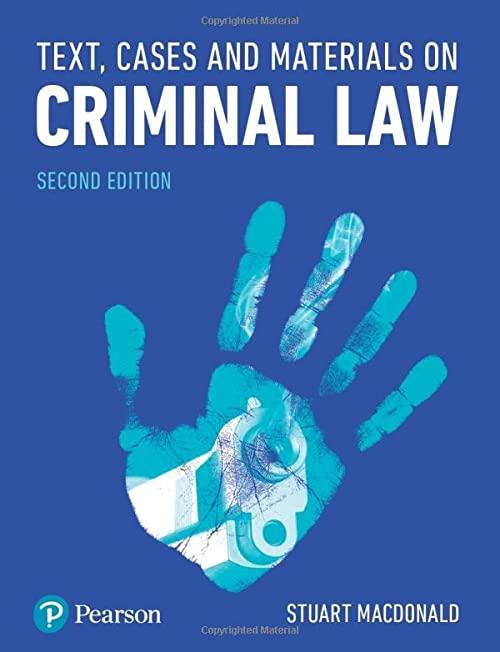Question
One investigative technique used by police in an attempt to solve serious crimes is called blooding. This involves asking a large group of people who
One investigative technique used by police in an attempt to solve serious crimes is called "blooding." This involves asking a large group of people who have some kind of relationship with or connection to a victim to voluntarily provide samples of their DNA. For example, following the death of a woman in her home, police in Windsor, Ontario, went door-to-door in a residential neighbourhood with DNA kits, asking residents to provide a sample. Most agreed; some refused. The Windsor police were criticized by a lawyer with the Canadian Civil Liberties Association who stated, "The extraction of a DNA sample without a warrant is concerning. It is inherently coercive. There is no guarantee that doing wide sweeps of DNA collection is going to produce the killer, but there is a guarantee it will create potential privacy violation and erosion of standards." A resident of the neighbourhood who agreed to give their DNA stated, "I have no problem with it at all. This is not about me, it is about catching someone who did something very terrible." As of late 2017, no arrest had been made. This technique has been used successfully by police. Police investigating the rape and murder of a 10-year old girl in Toronto went door-to-door with DNA kits, speaking to male residents. One of three men who refused the test was ultimately found guilty of the crime. The technique of blooding illustrates the tension between ensuring community safety and respecting citizens' rights.
In your post, explore the following questions: What is your position on the use of blooding by police? If you were asked to provide a DNA sample by police, would you do so? Would your position be different if you were guilty of the crime the police were attempting to solve?
Make sure you offer detailed and critical analysis. Multiple viewpoints should be introduced and contrasted. There should be excellent connection to course material and make sure to have additional research is used to support ideas (with citations). This answer should be based on Canada.
Step by Step Solution
There are 3 Steps involved in it
Step: 1

Get Instant Access to Expert-Tailored Solutions
See step-by-step solutions with expert insights and AI powered tools for academic success
Step: 2

Step: 3

Ace Your Homework with AI
Get the answers you need in no time with our AI-driven, step-by-step assistance
Get Started


